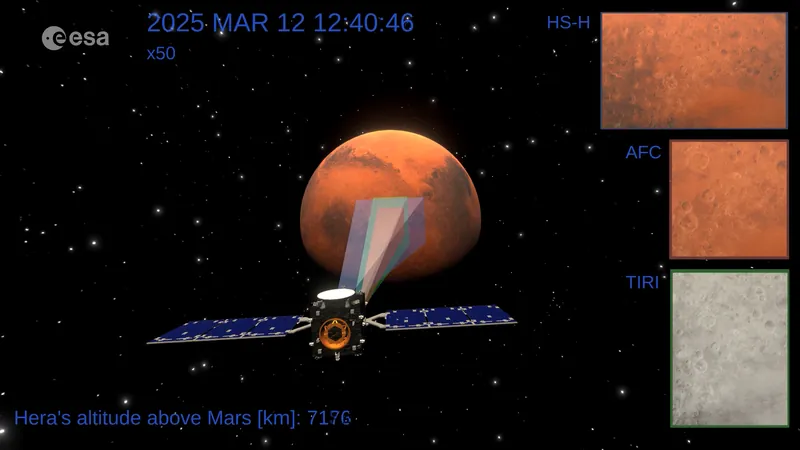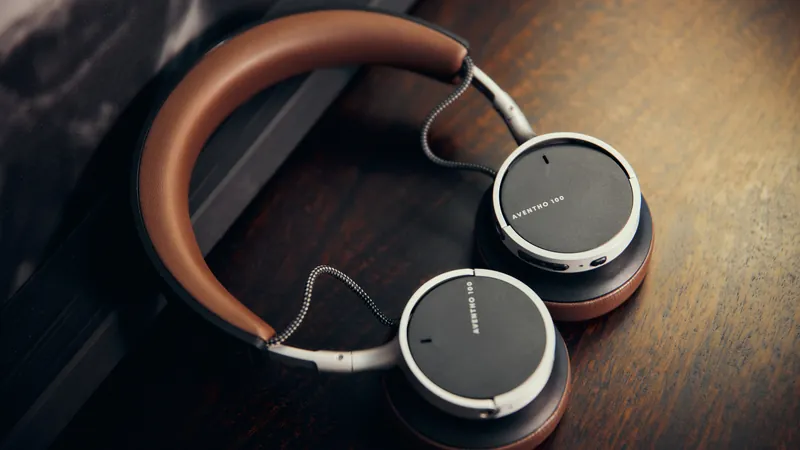
Get Ready for an Epic Flyby: ESA's Hera Spacecraft to Zoom Past Mars!
2025-03-12
Author: Ming
On March 12, 2025, the European Space Agency's (ESA) Hera spacecraft is set to perform an exhilarating flyby of Mars, marking a significant milestone in planetary defense missions. This daring encounter with the Red Planet is not just another tick on the calendar; it will play a crucial role in steering Hera towards the Didymos binary asteroid system, ultimately trimming months off its journey while conserving essential fuel.
The breathtaking flyby will see Hera come as close as 5,000 kilometers from Mars' surface, during which it will capture stunning images of Deimos, Mars' smaller moon, from a distance of about 1,000 kilometers, with a potential closer approach of 300 kilometers. What’s more, Hera will also take snapshots of Mars’ larger moon, Phobos, as it drifts away from the planet in the stunning orbital dance of our solar system.
In a groundbreaking simulation created using SPICE (Spacecraft, Planet, Instrument, C-matrix, Events) software, the dynamics of this flyby have been visualized. The simulation reveals that the closest encounter with Deimos will occur at 12:07 GMT, followed by a glimpse of Phobos at 12:49 GMT—showcasing the incredible capabilities of the Hera spacecraft.
Equipped with a suite of state-of-the-art instruments, Hera is poised to gather invaluable scientific data during its close encounters. Among these instruments are:
1. Asteroid Framing Camera:
This advanced tool comprises two redundant 1020x1020 pixel monochromatic visible light cameras, specialized for navigation as well as high-quality scientific imaging.
2. Thermal Infrared Imager:
Provided by Japan’s renowned aerospace agency, JAXA, this imager enables the spacecraft to analyze surface temperatures by capturing data in the mid-infrared wavelengths.
3. Hyperscout H:
This cutting-edge device functions as a hyperspectral imager, surveying in 25 visible and near-infrared spectral bands to identify and analyze surface minerals, contributing to our understanding of planetary formation and composition.
As excitement builds for this audacious mission, Hera’s flyby offers not only a glimpse into the technological prowess of modern space exploration but also underscores the collaborative effort between ESA and international partners. Prepare for an awe-inspiring display of science and adventure that will surely captivate space enthusiasts and researchers alike!


 Brasil (PT)
Brasil (PT)
 Canada (EN)
Canada (EN)
 Chile (ES)
Chile (ES)
 Česko (CS)
Česko (CS)
 대한민국 (KO)
대한민국 (KO)
 España (ES)
España (ES)
 France (FR)
France (FR)
 Hong Kong (EN)
Hong Kong (EN)
 Italia (IT)
Italia (IT)
 日本 (JA)
日本 (JA)
 Magyarország (HU)
Magyarország (HU)
 Norge (NO)
Norge (NO)
 Polska (PL)
Polska (PL)
 Schweiz (DE)
Schweiz (DE)
 Singapore (EN)
Singapore (EN)
 Sverige (SV)
Sverige (SV)
 Suomi (FI)
Suomi (FI)
 Türkiye (TR)
Türkiye (TR)
 الإمارات العربية المتحدة (AR)
الإمارات العربية المتحدة (AR)